Mercury
Mercury is my take on a modern gentleman's folding knife. Its 3.15" modified Wharncliffe/reverse tanto blade is operated via flipper tab for quick, easy deployment. At 7.4" long and just 0.75" wide when opened, the Mercury has a very slender form that is comfortable to carry in a pocket, especially when paired with the sculpted pocket clip that provides a fairly deep carry. The unique construction of the Mercury features integrated backspacer geometry that reduces complexity and improvdes rigidity, while an inserted lockbar maintains the minimal aesthetic and allows for more variation in handle materials.

The inspiration for the Mercury came from the shape of a wing. It was designed to appear sleek and aerodynamic. Embellishments are subtle, intended to accentuate the materials and forms rather than decorate them. Where most folding knives feature engraved grooves, angles, and details to add visual complexity, I've attempted to strip that away as much as possible. The handle only features a subtle 3D contoured surface that serves both a tactile purpose—the curved body feels great in hand—and a visual one, reflecting light in a more dynamic way.
I've also explored adding texture to the surface in the form of subtle parallel knurling, a design feature that is echoed on the blade. The slight surface variation improves grip, but mainly serves to add to the tactility of the knife.
Construction
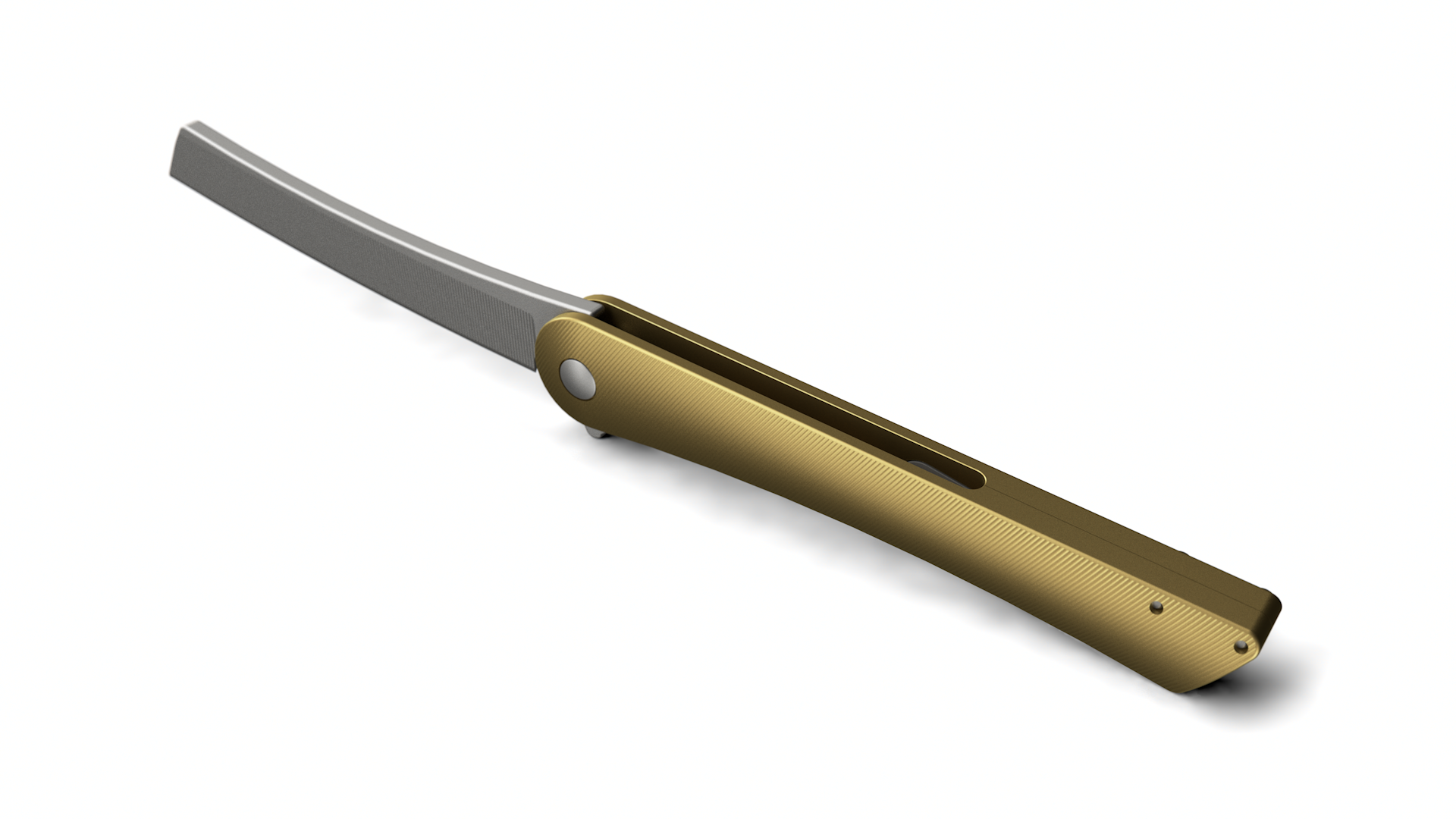
The construction of the Mercury knife is designed for performance without sacrificing aesthetics. Rather than a separate backspacer, the two halves of the handle come together at the rear to provide a nearly seamless fit. This also means screws need only be added from the rear, with just the smallest holes appearing on the “show” side of the knife (these holes could be eliminated entirely by switching to blind, rather than through, screw holes). The result is a knife that has nearly the appearance of an integral folder with none of the drawbacks for manufacturing or maintenance.

The other goal I had for the design of this knife was variability. I wanted to be able to explore different materials for the handle, without compromising on performance. This is accomplished in two ways: bronze washers to serve as the contact surface for the bearings (nylon washers were considered in lieu of bearings, but it's hard to beat that satisfyingly smooth action), and an inserted lockbar. The lockbar functions similar to a liner lock, but doesn't span the entirety of handles. This provides the same benefits as a traditional lockbar—namely, the ability to use any material the scales—in a much more discreet package.
In order to accomplish this, I had to design a lockbar that is able to handle repeated stress along its bending axis without easily getting loose or losing its precise alignment with the locking surface on the blade. A single screw provides downward pressure to withstand the leverage that occurs when one depresses the lock, and a separate piece of geoemtry provides the horizontal alignment. This approach is advantageous because the critical mating surfaces—the pill-shaped protrusion in the handle and matching hole in the liner—can be held to high tolerances more easily than the geometry around them, especially during processes such as tumbling.
The Blade
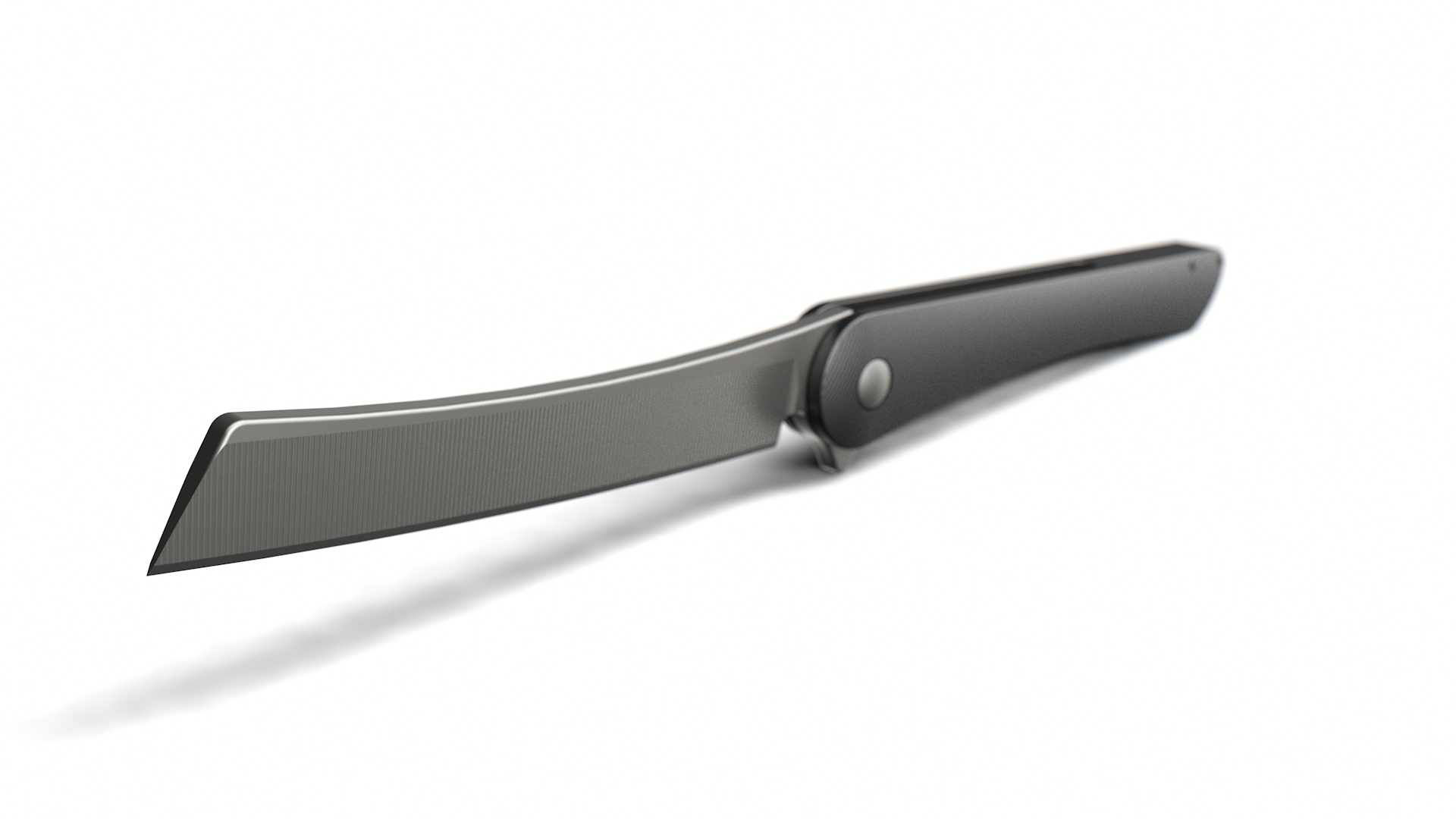
The most important part of a folding knife is the blade, and this knife is no exception. The blade of the Mercury knife is designed with usability in mind. As this is intended as an everyday or gentleman's carry knife, the focus was on light-duty utility. One probably wouldn't use this knife for batoning wood or starting fires, but the slim Wharncliffe-style blade is perfect for opening letters and packages, trimming loose threads, or cutting paper. It would be well-suited for an office or formal environment. Adding to that utility is a flipper tab for easy opening. I went through several iterations of flipper tabs for this knife, dialing in the position, size, and geometry to balance visual weight, feel, and functionalty. There is nothing worse than a knife with a hard-to-use opening mechanism or an ugly flipper that detracts from the aesthetics.
The Mercury's slim construction and elongated forms give it an almost cutlery-like feel, providing a lot of control and finesse for any situation. I've also experimented with engraving subtle grooves on the blade to mirror the handle texture. An added benefit of this is that even when polished, fingerprints are far less noticeable.
The Clip
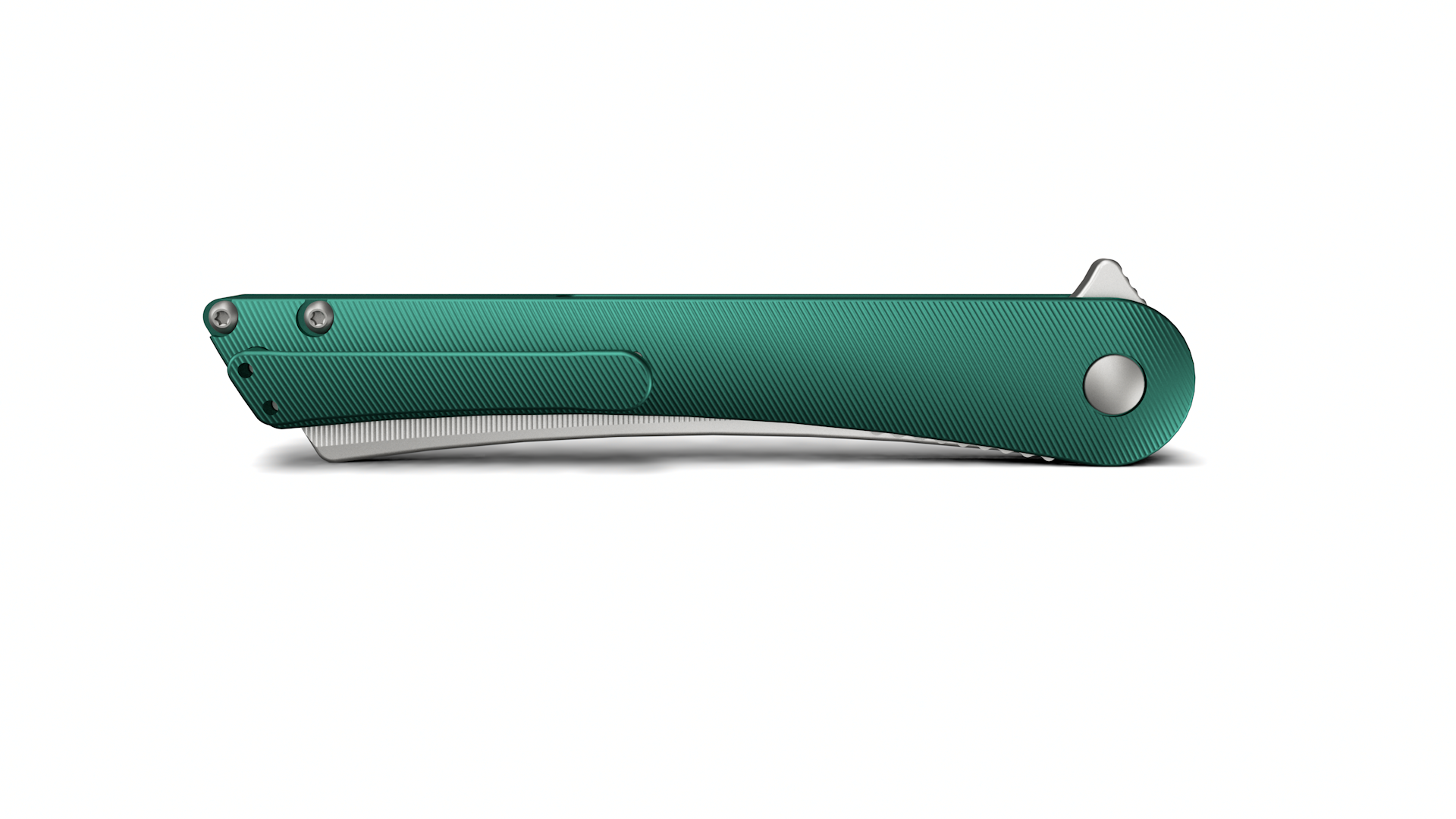
For the clip of the Mercury knife, I wanted something simple and unobtrusive. The clip isn't intended to be the focal point, and some people may choose to forgo it entirely. At the same time, however, the clip should be functional and durable. I ended up designing a clip that follows the curves of the handle below it, including the slightly curved top surface. Rather than being attached from the outside, the clip is attached from the inside before assembling the knife, drastically reducing the visual impact from the screws. Similar to the handle, the screws can be hidden entirely by switching to blind screw holes. From the right angle it almost blends in. The front of the clip is rounded while the rear is angled, mirroring the similar forms on the body of the knife. Despite sharper angles on the outward surface of the clip, the inner surfaces are completely rounded to ensure smooth operation and to avoid wear and tear on any pockets.
Prototyping
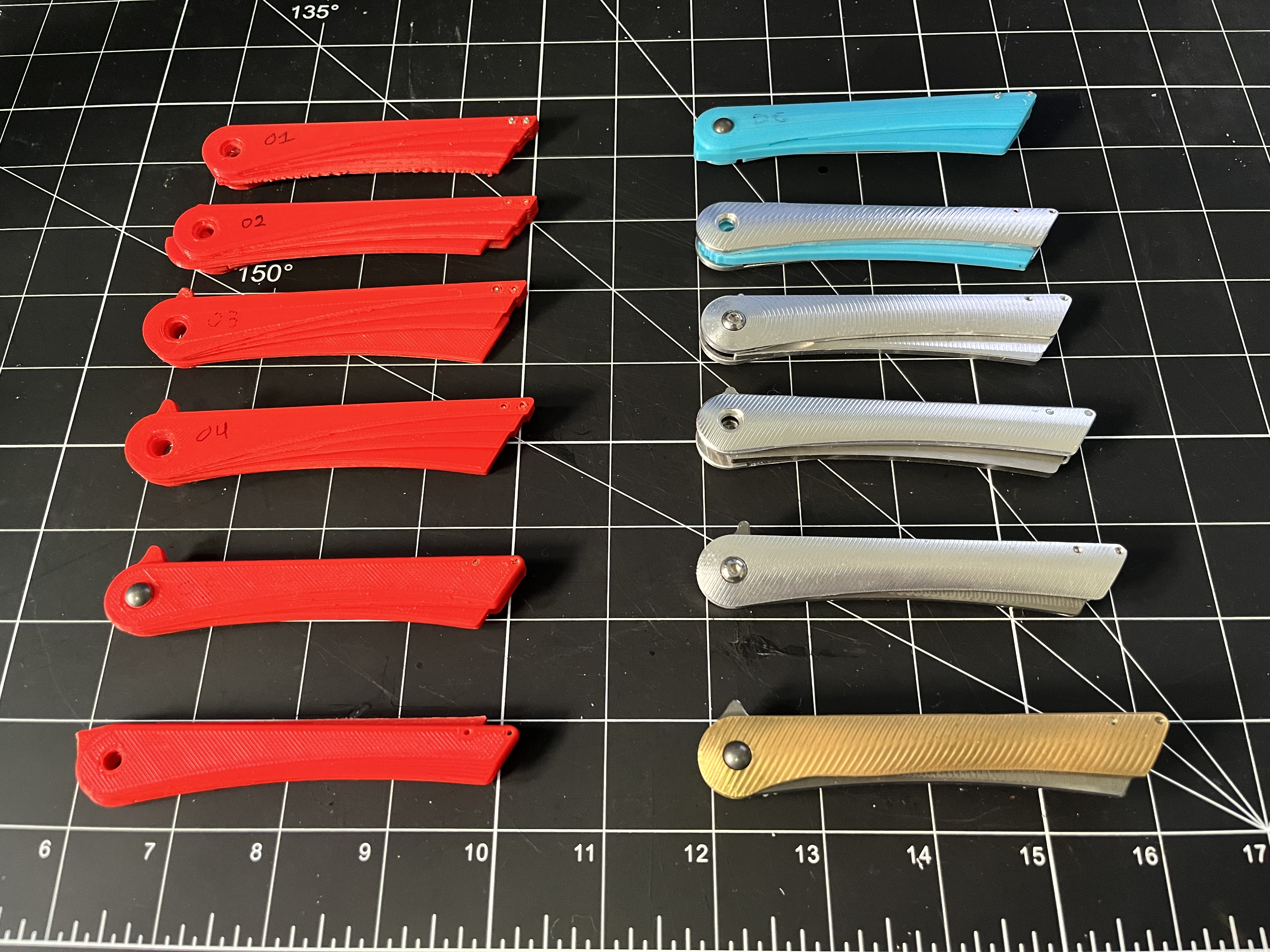
Prototyping the Mercury was a learning process in itself. I began with several 3D printed prototypes to help me get a feel for the shape, the mechanisms, and the overall look. There's a world of difference between seeing something on a screen and holding it in your hands; every project of mine starts off as a series of rough FDM prints.
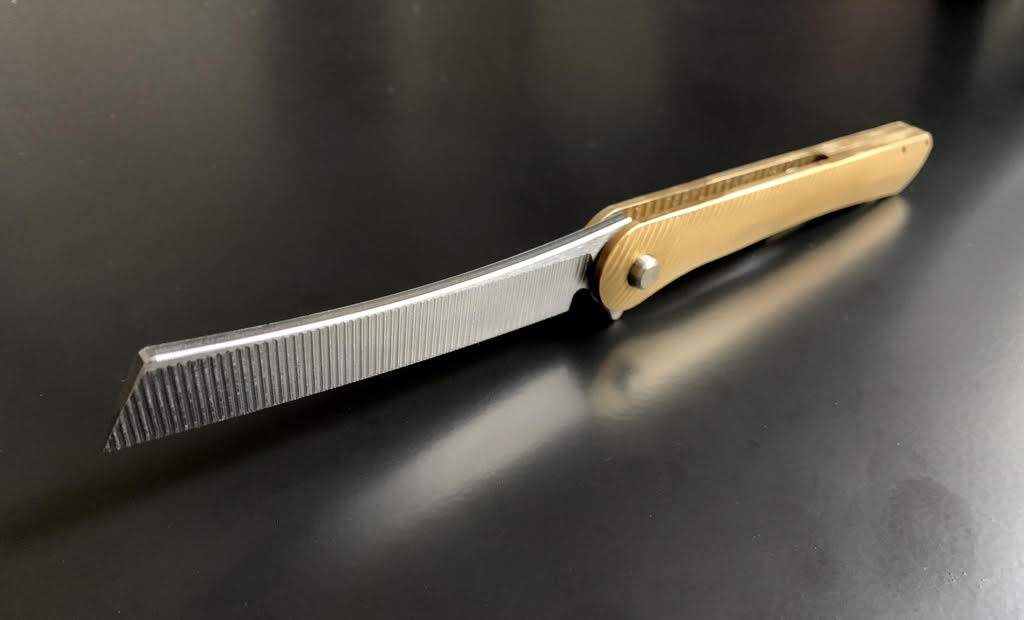
I was fortunate to have access to CNC milling equipment (specifically, a Tormach PCNC 1100 series 3) that enabled me to build the functional metal prototypes. The blade, perhaps expectedly, proved to be the most difficult part to make, requiring several iterations to ensure the geometry and functionality was to my liking. To aid in this process, a custom fixture plate was machined out of aluminum, enabling me to reliably and repeatedly set up the part for precise machining.
The final prototype as of the time of this writing is a testament to the hundreds of hours of planning and preparation that went into this project. Although there is still room for improvement (mainly in my own machining abilities), the potential for this knife is obvious. It opens easily and snaps solidly into a locked position with little play, and the action is smooth in both directions. The knife feels great to hold, fitting well in the hand, and slips easily into a pocket.
I'm incredibly proud of how far this project has come, and I hope to take it to the next level in the future.